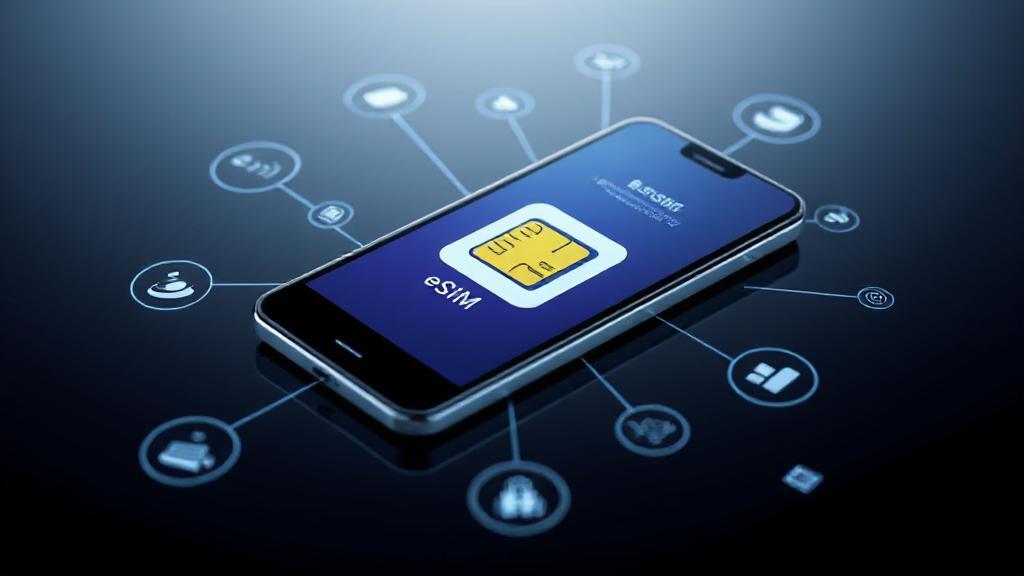What is eSIM?
An eSIM, or embedded SIM, is a small chip embedded directly into a device's motherboard during manufacturing. Unlike traditional physical SIM cards, eSIMs are programmable and can be activated remotely. This technology follows the GSMA eSIM specification, ensuring standardization across devices and carriers.
Key Components
Hardware Element
The eSIM consists of a small chip (eUICC - embedded Universal Integrated Circuit Card) soldered directly onto a device's motherboard, which securely stores the SIM information and carrier profiles.
Key Features
- Remote Provisioning: eSIMs can be activated and managed remotely
- Multiple Profiles: Store multiple carrier profiles on a single eSIM
- Compact Design: No physical SIM card slot needed
- Space Efficiency: More room for other device components
How Does eSIM Work?
The eSIM technology operates through a remote provisioning system:
- Device Activation: Device comes with a unique identifier (EID - eSIM ID)
- Carrier Selection: Choose carrier and plan through device settings or app
- Profile Download: Carrier sends profile over-the-air for installation
- Network Connection: Device connects to carrier network after profile installation
Benefits of eSIM Technology
For Consumers
- Easy switching between carriers
- Multiple active phone numbers
- No physical SIM handling required
- Reduced plastic waste
- Space-saving in devices
For Manufacturers
- Improved water resistance
- More space for other components
- Simplified production process
- Enhanced device design flexibility
Security Features
"eSIMs utilize end-to-end encryption and secure elements to protect user data and prevent unauthorized access to cellular profiles."
Security Layers
- Hardware-level encryption
- Secure profile management
- Remote deactivation capability
- Tamper-resistant design
Device Compatibility
Many modern devices now support eSIM technology:
| Device Type | Examples |
|---|---|
| Smartphones | iPhone 14, Google Pixel 7, Samsung S23 |
| Tablets | iPad Pro, Samsung Galaxy Tab |
| Smartwatches | Apple Watch, Samsung Galaxy Watch |
| Laptops | Surface Pro X, MacBook Pro |
For a comprehensive list of eSIM-compatible devices, check out this resource.
Challenges and Considerations
Network Operator Concerns
- Infrastructure updates required
- Legacy system integration
- Customer support training
- Profile management complexity
Consumer Adoption
- Limited awareness
- Resistance to change
- Carrier availability
- Device compatibility concerns
The Future of eSIM
The adoption of eSIM technology is expected to grow significantly. Future developments include:
Emerging Applications
- IoT devices
- Connected vehicles
- Smart home appliances
- Industrial equipment
Expected Developments
- Wider carrier support worldwide
- Increased device compatibility
- Enhanced security protocols
- More seamless carrier switching
For more information on eSIM technology and its implications, you can explore this detailed guide or visit the GSMA website.
